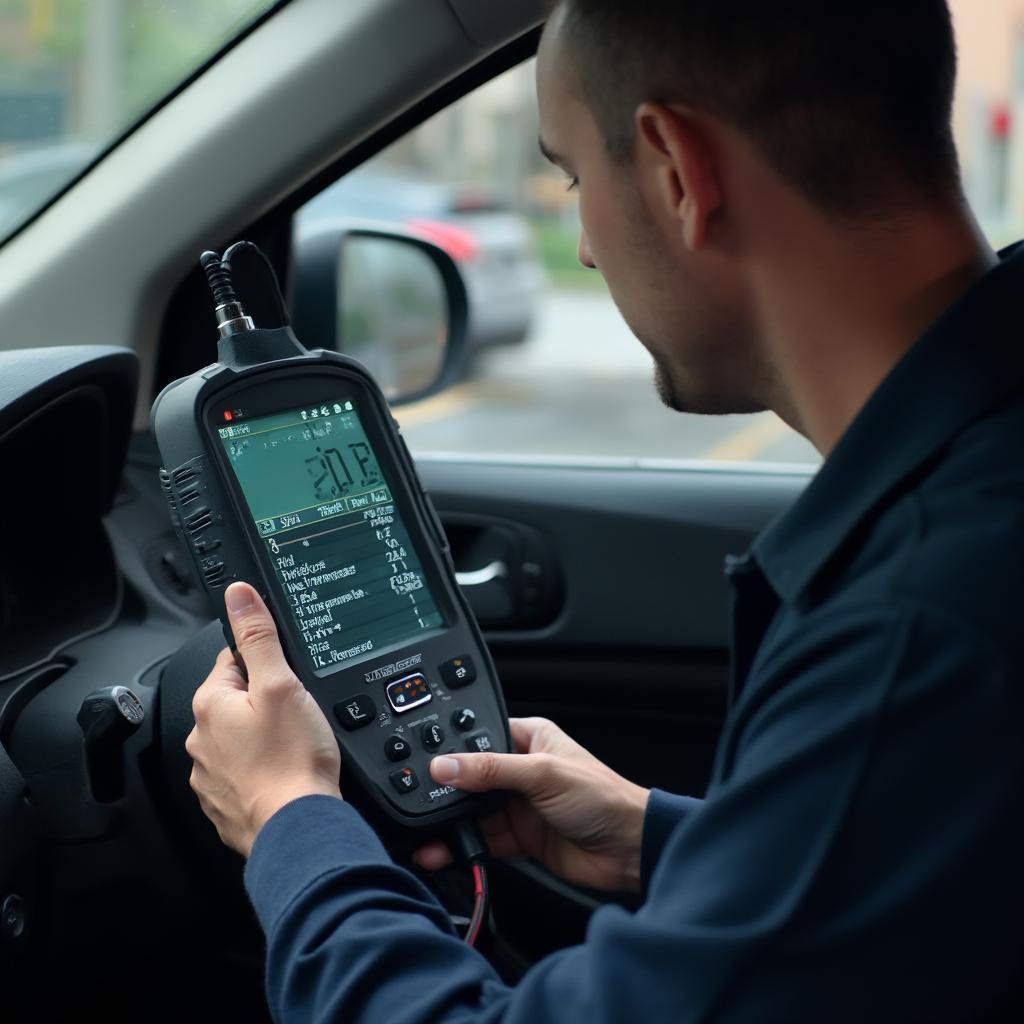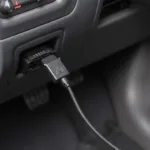Emissions OBD2 not communicating is a frustrating issue that can prevent your car from passing inspection and leave you wondering what’s wrong. This problem indicates a breakdown in communication between the onboard diagnostics system (OBD2) and the emissions control components. Understanding the causes and solutions can save you time and money.
Why is My Emissions OBD2 Not Communicating?
Several reasons can cause your emissions OBD2 system to stop communicating. These range from simple issues like a loose gas cap or a blown fuse to more complex problems like a faulty ECU or wiring harness. Identifying the root cause is crucial for effective repair.
Common Causes of OBD2 Communication Failure
- Loose or Damaged Gas Cap: A loose or damaged gas cap can trigger an emissions-related fault code and disrupt communication. This is often the easiest problem to fix. Simply tighten the cap or replace it if necessary.
- Blown Fuse: The OBD2 system has dedicated fuses. A blown fuse can cut power to the system and prevent communication. Check your owner’s manual to locate the OBD2 fuse and replace it if blown.
- Faulty OBD2 Port: The OBD2 port itself can be damaged due to wear and tear or improper use. Inspect the port for bent or broken pins. If damaged, the port may need to be replaced.
- Wiring Problems: Damaged or corroded wiring in the OBD2 system can disrupt communication. Inspect the wiring harness for any visible signs of damage.
- Faulty ECM/PCM: The Engine Control Module (ECM) or Powertrain Control Module (PCM) is the brain of the OBD2 system. If it malfunctions, it can prevent communication with other components.
- Aftermarket Installations: Incorrectly installed aftermarket parts, such as alarms or stereo systems, can sometimes interfere with the OBD2 system.
How to Diagnose and Fix “Emissions OBD2 Not Communicating”
Troubleshooting this issue requires a systematic approach. Here are some steps you can take:
- Check the Gas Cap: Start with the simplest solution. Make sure the gas cap is securely tightened.
- Check the Fuse: Locate the OBD2 fuse using your owner’s manual and check if it’s blown. Replace it if necessary.
- Inspect the OBD2 Port: Visually inspect the OBD2 port for any signs of damage.
- Try a Different OBD2 Scanner: Sometimes the problem might be with the scanner itself. Trying a different scanner can help rule out this possibility. You might want to consider an obd2 scanner toyota if you own a Toyota.
- Check for Low Voltage: Low voltage at the OBD2 port can also cause communication issues. This could be related to a failing battery or alternator. Refer to our article on obd2 port low voltage during inspection for more information on this topic.
- Consult a Professional: If the problem persists, it’s best to consult a qualified mechanic who can diagnose the issue using advanced diagnostic tools.
 Professional Mechanic Diagnosing OBD2 Issue
Professional Mechanic Diagnosing OBD2 Issue
What if the OBD2 Port Still Isn’t Communicating?
If you’ve tried the basic troubleshooting steps and the emissions OBD2 is still not communicating, it’s likely a more complex issue requiring professional diagnosis. This could involve tracing the wiring harness for damage, testing the ECM/PCM, or checking for interference from aftermarket installations. You might want to explore resources on chip tuning nitro obd2 if you suspect any modifications have impacted your system. For those with a Mercedes Sprinter, knowing the location of the obd2 port mercedes sprinter is crucial for diagnosis.
Expert Insight
“Emissions OBD2 communication problems are common and can stem from a variety of causes,” says John Smith, ASE Certified Master Technician. “While some issues are easy to fix, others require specialized equipment and knowledge. A thorough diagnosis is essential to avoid unnecessary repairs.”
Another Expert’s Opinion
Maria Garcia, Automotive Electrical Specialist, adds, “Ignoring an emissions OBD2 communication problem can lead to more serious issues down the road. It’s crucial to address the problem promptly to ensure your vehicle’s emissions system is functioning correctly and to prevent potential damage to other components.” If you are unsure about your car’s compatibility, check if is my 98 honda accord obd2 compliant.
Conclusion
Addressing an “emissions OBD2 not communicating” issue requires a systematic approach. Start with the simple checks, then move on to more advanced troubleshooting if needed. Don’t hesitate to seek professional help if the problem persists. Fixing this issue is crucial for passing emissions tests and ensuring your vehicle runs smoothly and efficiently.
FAQ
- What does “emissions OBD2 not communicating” mean?
- Can a loose gas cap cause this problem?
- How do I check the OBD2 fuse?
- What if I’ve tried everything and it still doesn’t work?
- How much does it typically cost to fix this issue?
- Can I drive my car if the emissions OBD2 is not communicating?
- Will this problem affect my car’s performance?
Need further assistance? Contact us via WhatsApp: +1(641)206-8880, Email: [email protected] or visit us at 789 Elm Street, San Francisco, CA 94102, USA. Our customer support team is available 24/7.
